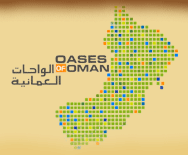 |
| Introduction |
| Research fields |
| Team & Partner |
| Links |
 |
German-Omani Cooperation and an interdisciplinary approach are the basic concepts of the project. The central objective is to document and research the landscape of settlements from the pre-Islamic into the modern period, resulting in a detailed documentation of the built environment and material culture, to comprehend the changes in the oasis settlements of northern Oman, and to show possible prospects for development. The oasis settlements are investigated in respect to their beginning and development as well as their ecological setting along two representative transects in northern Oman. The research focused on processes of transformation throughout history, regarding the architecture and material culture, the economy and ecology of the oasis settlements in a regional and interdisciplinary approach. Historian and Archaeologist study the origins and development of oasis agriculture and its connection with the water system. Patterns of land use through time are studied through the analysis of inhabited settlements and agro-pastoral areas as well as the remains of settlements, agrarian terraces and cemeteries. The study of the material culture, of oral history and of historical documents shall finally lead to writing the history of settlements in the area under consideration and link the region into a wider historical context including not only its role within the history of the Oman peninsula, but also how it has been linked to world trade and world history.
Contact person and coordinater: Prof. Dr. H. Gaube, University of Tübingen and Dr. Juergen Schreiber, German Archaeological Institut Architecture and Urban Planning One of the main research tasks was the documentation and analysis of the morphology, settlement structures and infrastructures network in a historical context and the presentation of problems and perspectives for future development. The scientific methods based on Aerial Photography and Remote Sensing. On the basis of satellite images of Northern Oman, detailed satellite photos of surveyed regions and aerial photos, basic maps were established to show the topographic preconsitions of the surveyed areas. Low altitutde, high resolution aerial photography from a balloon and the collection of ground truth data based on Differential Global Positioning Systems (GPS) ensure precise records. All images were scanned and rectified using ground control points, the positions of which were determined with GPS to decimeter-precision, and registered in a Geographic Information System (GIS) using ArcGIS and ArcView by ESRI. On the basis of this material, urban analysis on scales of 1:1000 and 1:500 were comiles and individual buildings were measured and drawn.
Agriculture and Landscape Ecology The agronomist and ecologist study the land use system with the ecological and socio-economic aspects of crop and livestock husbandry as well as the productivity and nutrient use efficiencies of annual and perennial crops in selected oasis. The main study areas were Balad Seet, Maqta, Wadi Tiwi and three villages on the Al Jabal a-Akhdar range.The main research fields are:
Contact person and coordinater: Prof. Dr. Andreas Buerkert and Prof. Dr Eva Schlecht, , University of Kassel, Germany
|
||||||||